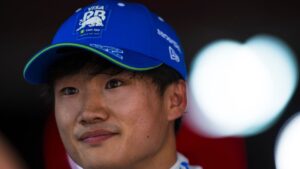IndyCar has been using the Dallara DW-12 chassis since 2012. It’s more than shown its usefulness, but is it time to replace the old workhorse?
The Dallara DW-12 first appeared in the 2012 IndyCar season. It superseded the previous IR05, which was a development of the IR03 chassis that had been available since 2003.
In addition to the new chassis, the original V8 engine has been replaced with a new 2.2-liter twin-turbocharged V6 engine. This, paired with revised aerodynamics that provided significantly more downforce than the oval-focused IR05, made the DW12 a beast.
The DW-12 was not popular with fans or drivers in its early years due to the unattractive aero kits, but it was a safer and more efficient race vehicle. Especially with the recently added technology aimed at reducing the possibility of cars locking together when racing side by side.
Aeroscreen
IndyCar introduced the Aeroscreen beginning with the 2020 season and beyond. They created it in partnership with Red Bull Racing, and it has been extremely successful. It’s saved lives.
The Aeroscreen has also made the automobiles much heavier. Which, in theory, is not a good thing. Fortunately, it has not harmed the racing product.
Not only that, but the cars may appear much better with the Aeroscreen. They resemble fighter jets.
If it ain’t broke, why fix it? Should you?
There’s a reason why the Dallara DW-12 has lasted so long. It works extremely nicely. It has repeatedly demonstrated amazing racing, cementing IndyCar’s position as the best open-wheel racing series. With that in mind, I believe it is entirely acceptable to question the likelihood of replacing it.
When introducing a new chassis, or anything new for that matter, there is always some risk. Nonetheless, there comes a point where the risk is worthwhile.
This brings up an important counter-argument. That’s evolution. Any sports organization, especially motorsports, must grow and evolve. So, while the Dallara DW-12 is a fantastic race vehicle that produces thrilling racing, how long does it need to stay?
Perhaps it will not be next year or the year after. Eventually, it will need to be replaced. It’s been almost a decade, and it may be another 20 years before IndyCar decides to make a change.
Hybrid engines are arriving.
Following the 108th running of the Indianapolis 500, IndyCar will debut the new hybrid powerplant in the DW12. It will have a little higher displacement than the tried and reliable V6 engine.
💬 “The car and hybrid system have made huge gains over the last few months as far as reliability and performance.”
This week, drivers at @HomesteadMiami shared their thoughts on the current round of hybrid testing. ⬇️
— NTT IndyCar Series (@IndyCar) February 24, 2024
The hybrid’s viability is uncertain. The new hybrid engines will make the vehicles considerably heavier.
It’s too early to say how this will effect the on-track product. It might very well determine whether IndyCar should replace the Dallara DW-12.
We’ll find out following the Indianapolis 500.








